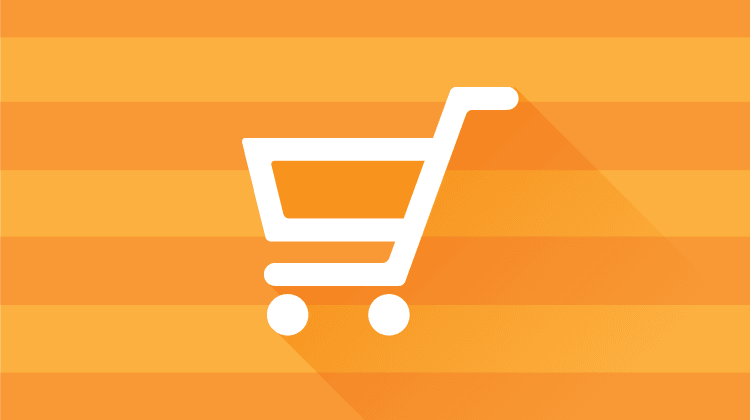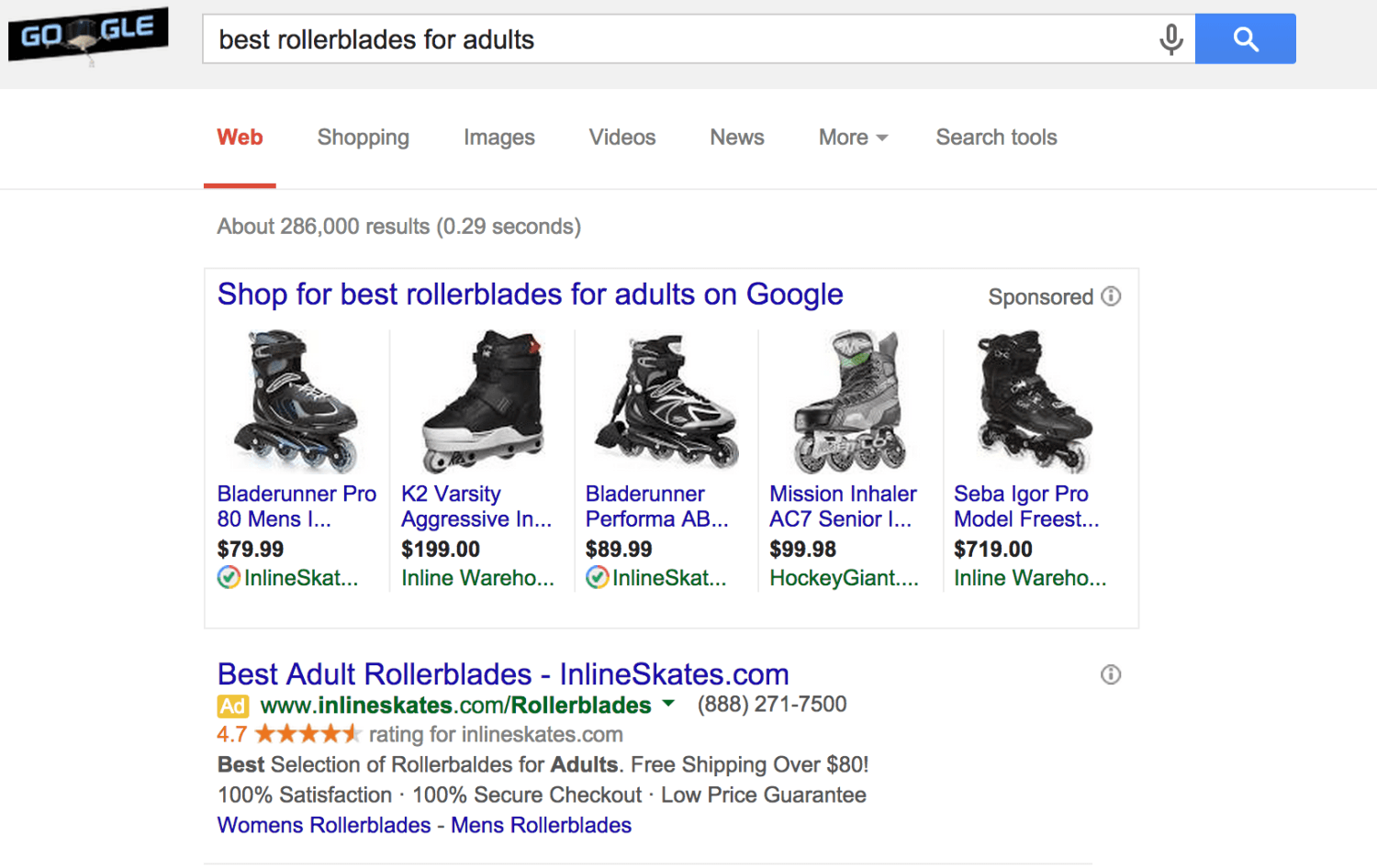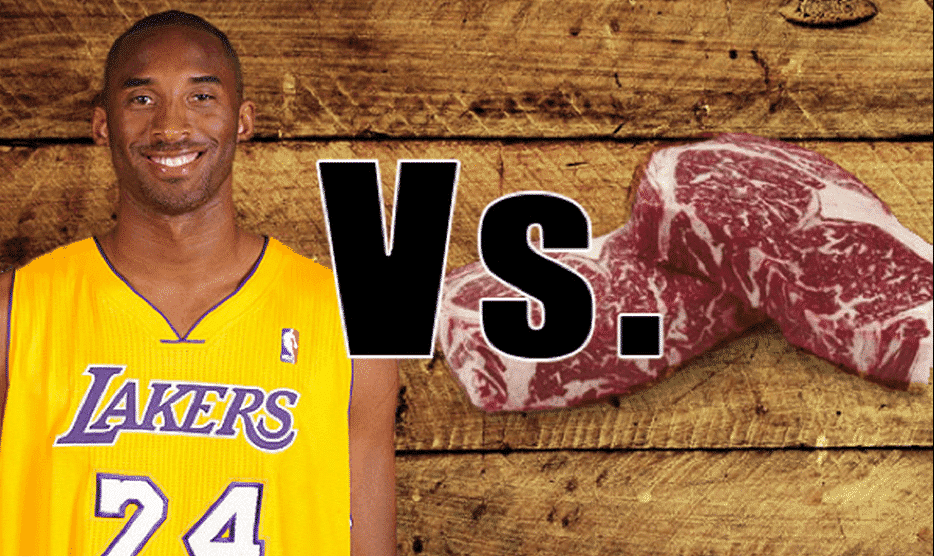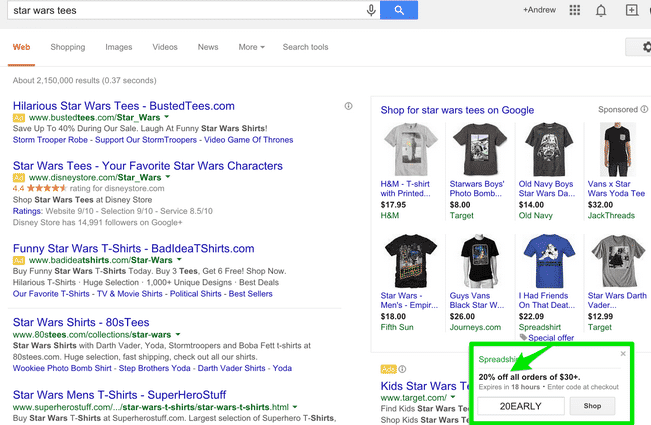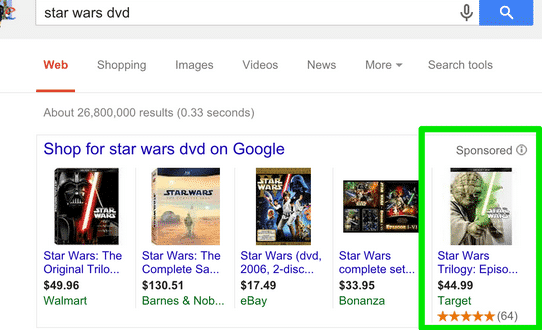by Andrew Warren • November 12, 2014
5 Things You Should Know About Google Shopping Campaigns
Is your shopping cart greased up for speed?
If you or one of your clients is an ecommerce shop and you’re using AdWords to promote your business (I hope you are), then you should definitely be using Google Shopping Campaigns.
If you don’t know what Google shopping campaigns look like, type in any tangible good (almost any) into Google and see the image ads on the right hand side or at the top of the page.
Once called Product Listing Ads (PLAs), Google shopping campaigns have made a huge shakeup in the search network. And while they are newer than regular text ads, shopping campaigns have grown over 141% in 2014, but still see a lower cost per click than regular search ads.
So how do you go about setting up your first shopping campaigns? I’m here to give you the top 5 things you should know about them. And hopefully entertain you along the way:
#1 – It’s All About The Feed
Did you know that Kobe Bryant’s parents named him after a slab of beef? Not just any cut of meat though. His parents named him after legendary Japanese bred Kobe beef after they saw it on a restaurant menu just prior to his birth (totally reliable Wikipedia reference here).
What does this have to do with Google Shopping Campaigns you ask? Well, it’s all in the feed. The reason that Kobe beef has gained such notoriety is because of it’s amazing flavor and texture, and that amazing-ness comes from the time and money that is put into raising the cattle.
They are only fed with grains and grasses from the province they are raised in and they’re even given beer and massaged to ensure the highest quality beef. It’s a lot of work on the front end, but it pays off when you take your first mouth-watering bite of Kobe beef.
[Tweet “Treat your #PPC Google Shopping Campaigns like Kobe beef, with massage and beer”]
Likewise, Shopping Campaigns can be time and labor intensive undertaking, but when done correctly and you get that first mouth-watering conversion from a Shopping Campaign, it makes it all worth it.
Depending on the e-commerce platform you’re using on your website, creating a great data feed doesn’t have to be hard. E-commerce platforms like Magento and Shopify have a number of plugins that do the heavy lifting for you (here and here, respectively).
Whether you’re putting a data feed together manually or using a plugin, the first thing you should do is read through Google’s Product Feed Specification documentation (here).
Google outlines the specific attributes that are required and recommended for your product data feed, and remember, putting in the time to make sure your feed is top notch is really worth it. If you don’t believe me just go order a Kobe Steak at your local steak house.
#2 – Forget About Keywords
Yes. I said it. Forget about keywords, Google Shopping Campaigns don’t use them.
Shopping Campaigns work very differently from traditional Search Campaigns. Instead of targeting based on keywords they target searches using your product title and description. So each product is it’s own keyword. Pretty sweet right?
Every product in your feed that is approved is targeted by default. You still have control of the granulation though. Shopping Campaigns use “Product Groups” to help you break down the campaigns and target specific areas with promotional copy and bid adjustments.
[Tweet “Running Google Shopping Campaigns? Disregard keywords completely and focus on product titles & descriptions”]
You can group products using the preset parameters inside of your Google Merchant Center feed (and yes, you’ll need to set up a Google Merchant Center account):
– Product Category (Appliances for example)
– Product Type (Refrigerator for example)
– Brand (Samsung for example)
– Condition (New)
– Product ID (For your internal use)
– Custom Labels (Like if your product on sale or part of a seasonal promotion, for internal use)
#3 – Bids: What You Need To Know
Even though you’re not using keywords, you can (and should) still treat Google Shopping Campaigns similarly to your existing campaign structures.
You can use multiple Shopping Campaigns to help segment and geo-target your audience. You can also split large product categories into separate campaigns to help granulate and give more control over budget and bid adjustments.
You can also do this by creating multiple Ad Groups within your Shopping Campaigns. Granularity is key to managing bids and targeting within Shopping Campaigns, so take control and get granulating.
One of the most important things to note about bidding in Google Shopping Campaigns is that it’s done at the lowest Product Group level. That is to say, there are no bids passed down from Ad Group to product.
If you change a bid in a Search Campaign on the Ad Group level it would change all the keyword level bids that didn’t already have their own bid. The same is not true in Shopping Campaigns.
For this reason, managing bids on a large amount of products can be a real pain in the rear.
If you have an Ad Group that you need to increase bids by 5% for and you made that change at the Ad Group level, it wouldn’t actually change any of the bids for the product groups inside the Ad Group, and if you tried to change bids at the parent product group it would overwrite all the product level bids you had inside the product group.
It can quickly become a product by product bidding game which could be considered either a blessing or a curse.
When deciding on how to adjust your bids, one of the best places to look for intelligible data and insights is the Dimensions Tab. There are several reports added in on Google Shopping Campaigns that help you break down the data and gain valuable insights at the product type, brand and individual product levels. This will ultimately help you decide on how to set your bids and group your product further.
Unfortunately, you aren’t able to make adjustments directly from the Dimensions Tab, so you have to take that data and go back to your campaign window to make the adjustments. Hopefully as the Google Shopping platform grows and the interface updates start to roll in, they’ll merge insights with the ability to edit and take action right then and there.
#4 – Ad Extensions: Google Shopping Campaign Style
Wait. There are Ad Extensions specific to Google Shopping Campaigns? Absolutely. They’re pretty bangarang too (yep, that’s a Hook reference). So, what are they?
– Google Merchant Promotions
Google Merchant promotions give advertisers the ability to include special offers with their Shopping Ads. Not only do they help the product stand out, but they also add an extra incentive for shoppers to click and ultimately purchase from you over a competitor.
– Local Inventory Ads
Local Inventory Ads allow you to display real time info about your local inventory. You can display in-store availability, nearest location and pricing alongside the ads. This helps create urgency and increases the attention your ads will draw from your competitors who aren’t using these cool extension functions.
– Product Ratings
This is a pretty new extension that aggregates your products reviews from all over the internet and presents a star rating (5-star scale) right below your ads. There is definitely a prestige factor here that will set you apart from your competitors. Not to mention the added credibility you get from the collaborative social proof.
[Tweet “Have you ever tried using Google Shopping Campaign extensions? Give these a shot”]
#5 – Some Things To Avoid
Sometimes, you just have to be able to dodge lasers like a pro. Here are a couple things to avoid that will save your budget and Ad Spend:
– Don’t Compete With Yourself
It’s easy to put the same product in multiple product groups if you aren’t careful and that means you are losing control of what bids and promotional text shows next to that ad when someone searches it. Be both methodical and logical when structuring your Shopping Campaign and you’ll be ok.
– Remember That Feed Quality Is King
If you find yourself in a position where you think you’re ads should be showing and they aren’t, then the first thing you should do is go back to the source. Your product feed. Check your product title, description and price. Then make sure you have promotions and ad extensions and that your products are organized and assigned to appropriate categories. If your feed is excellent and your price is competitive then you are on the right path.
So that sums up Google Shopping Campaigns in a nutshell. We’ve barely scratched the surface, but I hope you have a slightly better understanding of Shopping Campaigns and how to start using them. Stay tuned for more insights and tips for getting the most out of them!

